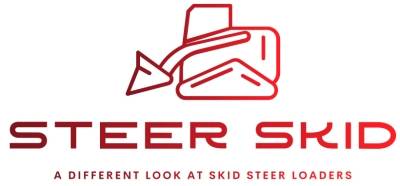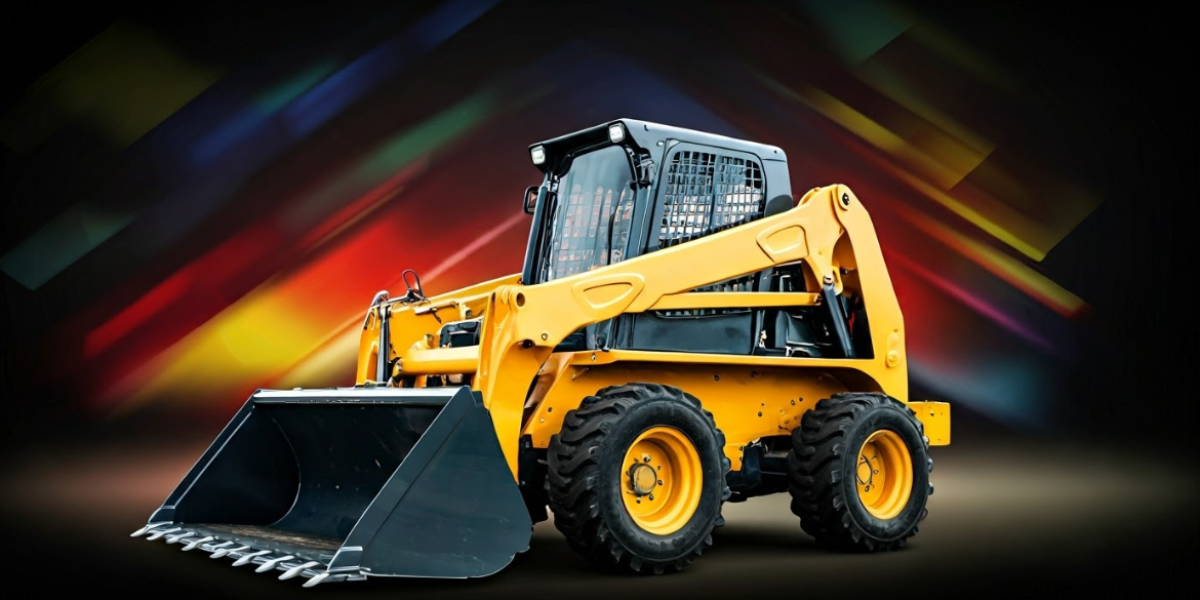Evaluating and purchasing the most suitable equipment can determine the success or failure of your project’s efficiency. If you’re a landscaper, construction professional, or small business owner who is confused about picking between a skid steer and a track loader, this guide will be helpful for you.
Both machines are indeed very flexible, but their light is on different levels. We will show you the key differences and use cases of both so that you can make a wise decision for your project.
Skid Steer Loaders
Skid steer loaders are tiny and agile machines that are the best choices for projects with a limited amount of space. They possess a perfect set of skills for projects that can’t afford much space by virtue of their amazing turning capacity, which lets them still turn and remain productive in such restricted areas for instance, they are usable in urban construction sites or small-scale landscaping jobs.
Skid steers are the machines that run on wheels, and that’s why they can give a swift reaction while working with them. Wheels are preferable to tracks in most situations: they provide good traction on hard, flat surfaces like asphalt or concrete.
Besides, you should know that wheel skid steers do not make a good impression on those surfaces that are muddy or uneven because such surfaces are not favorable for the traction of the wheels.
Furthermore, the speed-oriented light task, which usually involves moving a huge amount of material and quick digging, for example, is where skid steers are always doing well.
Track loaders equipment
On the other side, track loaders are the machines to be selected once you have to deal with difficult environments and jobs of heavy-duty character.
With their strong tracks, steel, or rubber, they offer excellent grip and stability, which is the reason why they are suitable for the above-mentioned terrains, like those of a muddy, sandy, or rocky nature.
Skid Steers and Track Loaders: The Widest Differences
1. Maneuverability
- Skid Steer: The skid steer is best suited to running efficiently and at maximum maneuverability on hard, level surfaces such as concrete or asphalt. It can perform a very tight turn and thus is the best fit for confined spaces.
- Track Loader: While not as quick as skid steers, track loaders have been designed for difficult terrains. They are the stars of the show in the soft or uneven areas where skid steers are not so good.
2. Traction
- Skid Steer: Comfortable on hard surfaces but is weak in gaining traction in sandy, muddy, or other loose earth.
- Track Loader: Instead of steel tracks, rubber tracks offer more traction in such adverse conditions as mud and sand; therefore, track loader is the perfect solution for this kind of weather.
3. Ground Pressure
- Skid Steer: The area of ground each wheel touches is the smallest one, hence more weight is concentrated on that tiny spot of the soil, which can cause disturbances to the soil or create ruts in soft ground.
- Track Loader: The wide track footprint spreads the weight of the whole machine over a large area on the ground so the machine exerts minimal ground pressure. Such a situation guarantees soil disturbance is minimal and the environmental footprint is lighter.
4. Stability
- Skid Steer: When on flat, hard surfaces, skid steers are as stable as they can be, but they are not as reliable as track loaders when navigating steep slopes or carrying heavy loads.
- Track Loader: More stable when carrying heavier materials over steep or uneven surfaces, the strong points of track loaders are perfect for this particular case.
5. The Cost Factor
- Skid Steer: Skid steer is referred to as a machine with a lower price in both aspects, buying and using it. The equipment is cost-effective, and small businesses that run on a tighter budget will definitely appreciate this fact.
- Track Loader: Though they have a higher initial cost and their maintenance is also more expensive, the performance of track loaders in the heavier load-bearing category usually warrants the additional expenses for more complicated jobs.
Use Cases for Each Machine
When to Choose a Skid Steer
- Construction on Hard Surfaces: Skid steer loaders are without a doubt the go-to equipment for constant movement on pavements or hard-packed sites where a high degree of handling and agility top the list of requirements.
- Landscaping with Tight Turns: One of those instances when jobs are quick, and workers easily move between areas with amenable shapes, such as residential yards.
- Urban Snow Removal: They are so selectively, skillfully, and efficiently used to sweep snow off the walkways or the urban streets that skid steer loaders are the right equipment for this job.
- Demolition: The tool that best suits the confined interiors and at the same time gives a hand in the cleanup is that which has a capability of making a U-turn.
When to Choose a Track Loader
- Soft, Uneven Terrain: Compared to the skid steer loaders, track loaders, being compact and easily navigable, are the best match for construction in unfavorable conditions such as muddy, rocky, or inclined areas. The track loaders are facilitating the efficiency of the machines since the skid steers are unable to navigate efficiently through such terrains.
- Heavy Landscaping Projects: Terrific for constructing walls, grading soil, or transporting heavy rocks and mature plants.
- Forestry and Land Clearing: Tracked loaders are ideal for logging business both for felling trees and recovering the felled.
- Agriculture: Very good for feeding animals, transporting hay, or handling jobs in wet, soft ground.
Quick Decision Guide
Still not sure which one to go for? Here is a quick guide that should help you make up your mind:
- Choose a skid steer if:
- You work on surfaces that are hard and flat.
- You need to easily navigate along with the tight turns that come with the given confined spaces.
- Cost is your major priority.
- Choose a track loader if:
- Your working terrain is one that is soft, muddy, or uneven.
- You need more grip or stability.
- You move heavy loads around or work on steep terrain.
Final Thoughts
Skid steers and track loaders are both great tools to have, but the appropriate tool will be determined by the specific needs of your project, your budget, and the nature of the work environment.
A skid steer would probably be the cheaper option initially, but a track loader investment can give a better performance in severe conditions.
When you’re all set to find the perfect machine for your next job, consider the terrain, the tasks involved, and the cost. A good decision will result in smoother operations and better results on-site.
Have you tried any of the machines before? Feel free to share your experiences with us in the comments below! Your opinions are more than welcome! Don’t be shy. Post your opinions on the equipment or ask questions related to skid steers and track loaders. Let’s keep the conversation going and learn from each other! Have a great day operating!
Remember to carefully assess your project needs and consider factors such as maneuverability, traction, ground pressure, stability, and cost when making your decision. And don’t hesitate to seek advice from experienced operators or industry professionals if you’re still unsure.
By choosing the right equipment for your job, you can improve efficiency, productivity, and safety on-site. So keep learning, exploring new options, and staying informed in order to make the best decisions for your business.

